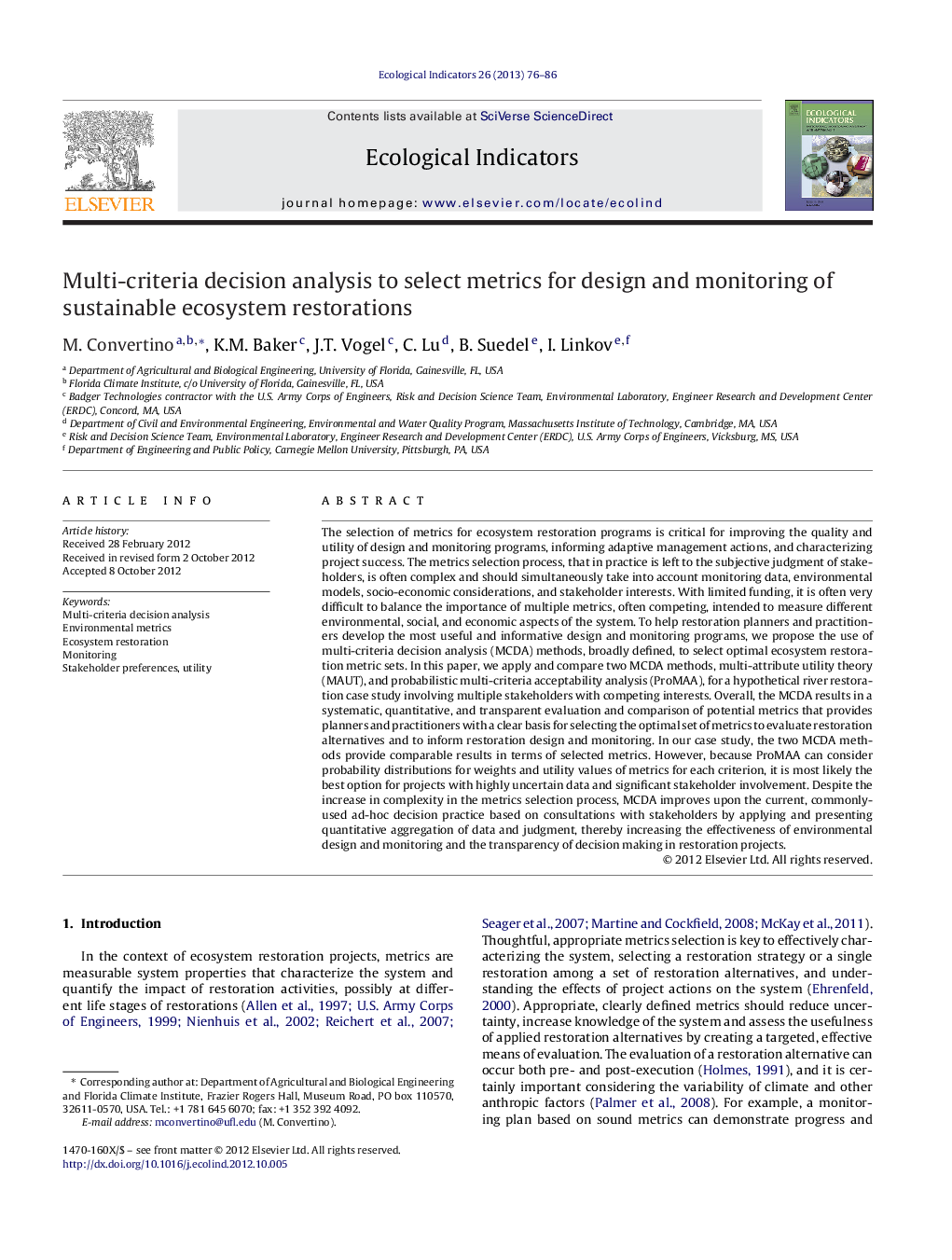| Article ID | Journal | Published Year | Pages | File Type |
|---|---|---|---|---|
| 4373565 | Ecological Indicators | 2013 | 11 Pages |
The selection of metrics for ecosystem restoration programs is critical for improving the quality and utility of design and monitoring programs, informing adaptive management actions, and characterizing project success. The metrics selection process, that in practice is left to the subjective judgment of stakeholders, is often complex and should simultaneously take into account monitoring data, environmental models, socio-economic considerations, and stakeholder interests. With limited funding, it is often very difficult to balance the importance of multiple metrics, often competing, intended to measure different environmental, social, and economic aspects of the system. To help restoration planners and practitioners develop the most useful and informative design and monitoring programs, we propose the use of multi-criteria decision analysis (MCDA) methods, broadly defined, to select optimal ecosystem restoration metric sets. In this paper, we apply and compare two MCDA methods, multi-attribute utility theory (MAUT), and probabilistic multi-criteria acceptability analysis (ProMAA), for a hypothetical river restoration case study involving multiple stakeholders with competing interests. Overall, the MCDA results in a systematic, quantitative, and transparent evaluation and comparison of potential metrics that provides planners and practitioners with a clear basis for selecting the optimal set of metrics to evaluate restoration alternatives and to inform restoration design and monitoring. In our case study, the two MCDA methods provide comparable results in terms of selected metrics. However, because ProMAA can consider probability distributions for weights and utility values of metrics for each criterion, it is most likely the best option for projects with highly uncertain data and significant stakeholder involvement. Despite the increase in complexity in the metrics selection process, MCDA improves upon the current, commonly-used ad-hoc decision practice based on consultations with stakeholders by applying and presenting quantitative aggregation of data and judgment, thereby increasing the effectiveness of environmental design and monitoring and the transparency of decision making in restoration projects.
Graphical abstractFigure optionsDownload full-size imageDownload as PowerPoint slideHighlights► Metrics of ecosystems services are chosen for selecting and monitoring restorations. ► Metrics are selected using Multi-Criteria Decision Analysis methods. ► Multi-Attribute Utility Theory and Probabilistic Multi-criteria Acceptability Analysis models are considered. ► Weights of metrics expressing stakeholders’ preferences are quantified. ► The software DECERN–SDSS is presented.
